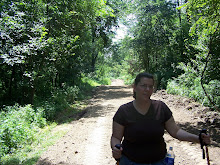
Since I'm still on the crutches I haven't had a chance to get to the library recently. That means that I'm pulling the older classics off my bookshelf to review. I have so many favorite books that it's often hard to pick from them all. I'll try to get to most of them. Mostly I'll just try to pick up the pace on my reviews.
In Alexander and the Terrible, Horrible, No Good, Very Bad Day, our protagonist Alexander wakes up with gum in his hair. His day starts out terrible and in his own mind just keeps getting worse. Alexander goes through the day listing the injustices against him or accidents that befall him. He doesn't get a toy in his cereal even though his brothers do. He has to sit in the middle during his morning drive to school. He gets a cavity. He doesn't get to buy the shoes he wanted. And there were lima beans for dinner and kissing on TV. As Alexander keeps reminding us, "It was a terrible, horrible, no good, very bad day. I think I'll move to Australia."
I've been a huge fan of most of Judith Viorst's work but this has to be my favorite. Alexander is the classic underdog, at least in his own mind. His troubles aren't really all that big but Viorst captures a child's mentality so well that we are reminded of how HUGE everything seemed at that age. A small slight from a friend was the end of the world. A dropped ice cream cone enough to ruin the day. Viorst captures Alexander's mood so well, creating a grumpy character that you can't help but love. Even the wording is perfect for a small child who is in whining mode. Viorst makes the sentences either choppy and short or run-on sentences like the first one in the book. "I went to sleep with gum in my mouth and now there's gum in my hair and when I got out of bed this morning I tripped on the skateboard and by mistake I dropped my sweater in the sink while the water was running and I could tell it was going to be a terrible, horrible, no good, very bad day." I can hear the classic whine in his voice. I can picture this little boy standing in front of his mother yelling out his litany of complaints. But although Alexander whines throughout the entire book, we can't help but love him.
Part of that is how easily we identify with the character. His woes were ours at one point. But part of it is the wonderful illustrations by Ray Cruz. Cruz uses ink and crosshatch to bring to life Alexander's world. We see him as a slightly rumpled, awkward kid that most of us remember seeing whenever we looked into the mirror. His face is almost always frowning and his forlorn rumpled nature makes him easily likable. Cruz adds just enough details to create very realistic images, even with only ink as a medium. There is a seventies look to the illustrations that should date the book but doesn't. The images and the words are timeless and children today will enjoy it just as much as they did when it first came out in 1972. Alexander is a lovable grouch who eventually realizes that Australia isn't going to solve his problems. A great story and one that kids will easily see themselves in.


